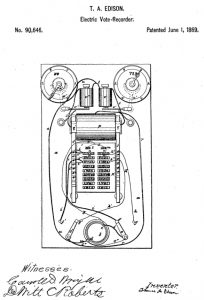At the outset of product / service development there is often a tension between the desire to keep the invention confidential and the desire to know whether there will be sufficient interest in the invention from customers or those who might make and sell it to customers. Therefore the issue arises as to how to protect an invention early in the product development, partnering, or sale process.
There are three ways of proceeding: (1) first file a patent application before any disclosures to third parties, (2) disclose to a third party only after obtaining a signed nondisclosure agreement (NDA), (3) disclose without an NDA or application filed and hope for the best. The first is the most preferred and the last approach is not recommended.
Difficulties with NDAs Before Sales Pitch
Disclosure of an idea to another party that is under a written obligation (e.g. NDA) to maintain that idea in secret, generally will not be considered a public disclosure that would negatively impact your patent rights. However, if you are attempting to approach a company to (1) convince them to make and sell your product and give you a royalty or (2) to sell a product you will make, it may be very difficult to get them to sign an NDA or other legal agreement before you tell them anything about your invention.
This is true because, unlike when you are approaching an engineering firm, here you are not offering to pay the other party any money. You are essentially saying, “I have a great product or service that will make you money, but before I tell you anything about it, I need you to sign this legal agreement.” This is a difficult selling approach.
If they sign that agreement and then find out that your product is very similar to something they are already working on this creates a problem because you may assert that when they come out with that product that they copied your invention. Or if they just don’t like the idea, they are still encumbered by the NDA for any further developments. It would seem that there’s little incentive for them to sign an NDA with you, especially if they receive many similar solicitations from other inventors or companies. Therefore, if your sales pitch starts by requiring the recipient to sign a legal agreement before further discussions, you may not have very many takers.
If you do get the other party to sign an NDA, you should know that NDA’s are not self enforcing. Therefore, if the other party breaches the NDA it will be necessary for you to spend money in the form of legal fees to enforce the agreement or to recover damages. As such, you should investigate the trustworthiness of the other party.
Patent Application Filed First
The first option, having a patent application filed first, is the safest approach. Patent law encourages early filing of patent applications. This assumes that the invention is develop sufficiently to support a patent application filing. See this article on whether your product needs further development before filing a patent application.
If your product needs further development and such development requires the assistance of outside engineers or product developers, then you should use a written nondisclosure agreement when engaging such outsiders to help develop the invention. Also, you should ensure that the terms of any engagement with such providers specifies that you will own any developments and inventions that they might create under the engagement. Outside engineers and product developers are generally more willing to sign an NDA, because you are usually paying them money in return for their services. Further, their business revolves around developing products and they should be used to signing such agreements.
Regarding marketing, if a patent application, preferably one drafted by a patent attorney, is filed that adequately covers your invention then from a patent perspective, you are no longer required to keep your idea secret. You may instead may go exploit your idea publicly. In fact, as it can take years to obtain a patent, inventions are usually commercialized and marketed after a patent application is filed but before a patent is granted.
Conclusion
It can be difficult to engage in a sales approach with another when your first request is to sign a legal agreement before providing information. Having a patent application filed before making a sales pitch is generally the best approach. Service providers, such as engineers and developers, are generally more likely to sign an NDA as they are being paid for their work and they may regularly assist in invention development.
 Thomas Edison is an inventor famous for his long running electric light invention among many others. Edison accumulated over 1000 patents in his life time. His life and work is covered in Randall Stross’ book The Wizard of Menlo Park: How Tomas Alva Edison Invented the Modern World.
Thomas Edison is an inventor famous for his long running electric light invention among many others. Edison accumulated over 1000 patents in his life time. His life and work is covered in Randall Stross’ book The Wizard of Menlo Park: How Tomas Alva Edison Invented the Modern World.